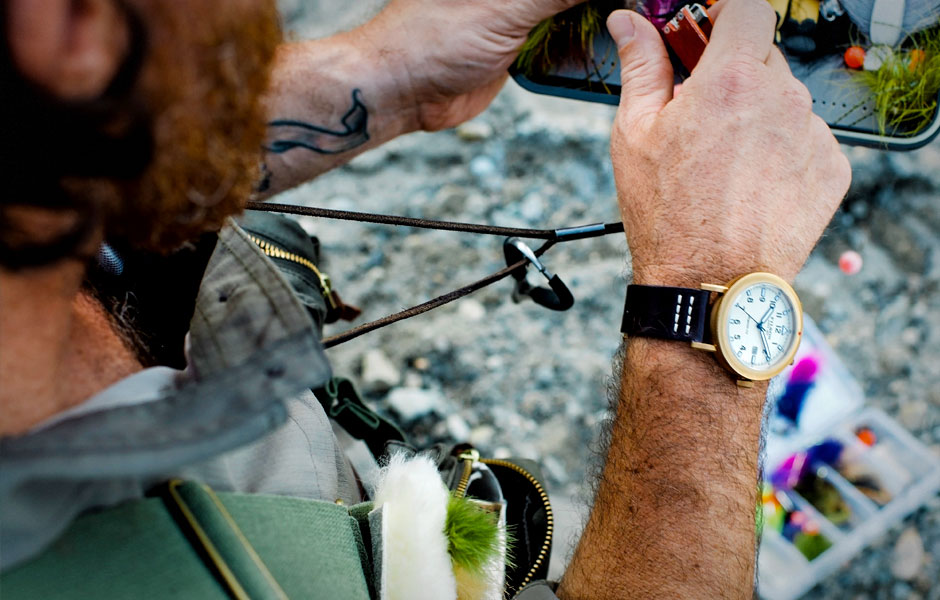- 1. Filson’s Scout Watch Collection
- 2. Filson’s Scout Watch Collection
- 3. Filson’s Scout Watch Collection
- 4. Filson’s Scout Watch Collection
American legacy brand Filson jumped into the watch business earlier in 2015 through a long term collaboration with the few-years-old, Detroit-based Shinola (who also make bicycles, leather accessories, and pet gear). Their March debut, a series of field watches dubbed the Mackinaw Watch Collection, proved Filson’s outdoorsy, American style could be translated into sharp-looking timepieces matched under the hood by state-of-the-art machinery. They’ve kept the momentum going with their second endeavor, the Scout Watch Collection, which came out this week.
This time they’ve presented their streamlined take on classic WWII pilot watches. Each of the seven styles in Filson’s Scout Watch Collection are made with scratch-resistant and fingerprint-proof sapphire crystal covers and use Shinola’s Argonite quartz movement. For those of you who like a slightly busier design, two of the watches incorporate double-aperture date configuration. The rest use a date window. Hands are glow in the dark, and being a pilot watch, of course there’s a bi-direction rotating top ring to help you keep track of elapsed time.
With a 45.5mm dial, faces are oversized but not so big as to look like an airport took over your wrist. You can find them in black, cream, or grey and they are cased in protective PVD-plated stainless steal. Each watch comes with a 20 ATM rating, so by all means keep them on when you dive into the water. Just mind the straps, which are handcrafted American Horween leather and come in a variety of pragmatic colors from olive and slate to black and brown.
It’s a watch collection that uses the most modern watchmaking technology, and dresses it up in the kind of updated classic style that Americans gravitate towards. Toss in a gorgeous photo shoot of the Scout collection in Alaska’s fly-in/fly-out backcountry, and it begs the question: Is the timeworn-meets-greenhorn nature of the Filson-Shinola collaboration about to lead American horology out of the wilderness? With just two collections under their belt, it’s too early to tell, but it sure looks like the answer could be yes.







